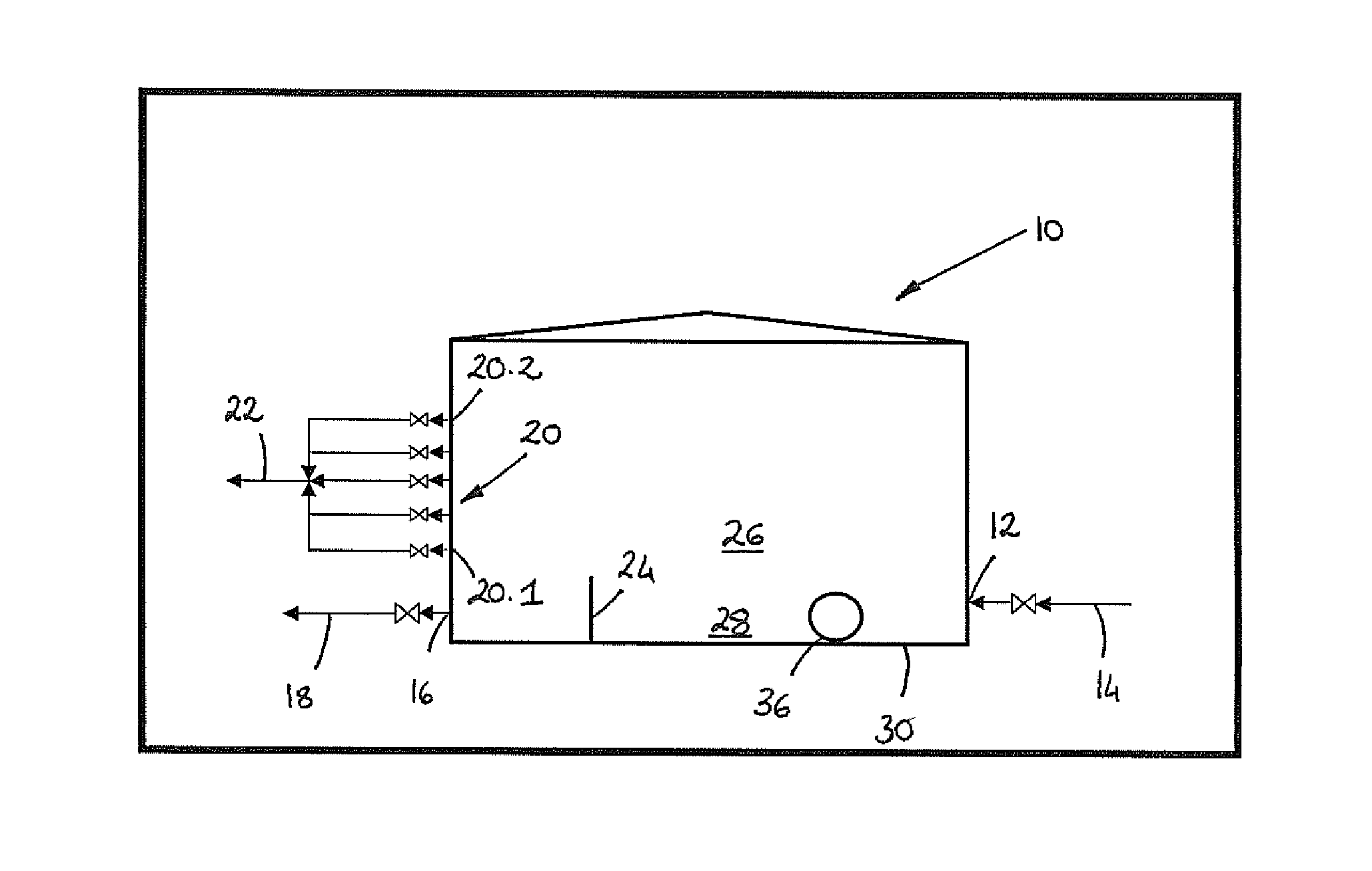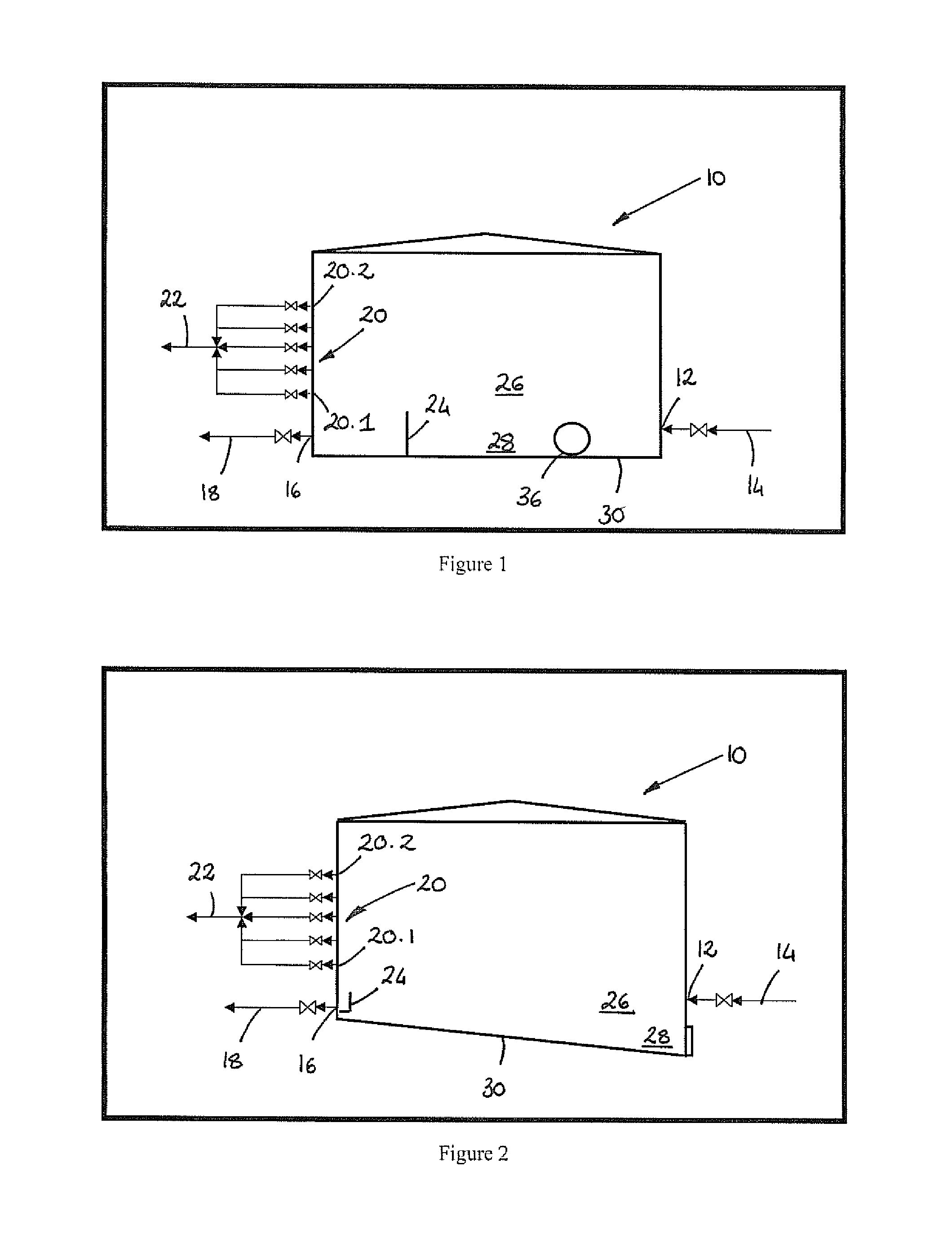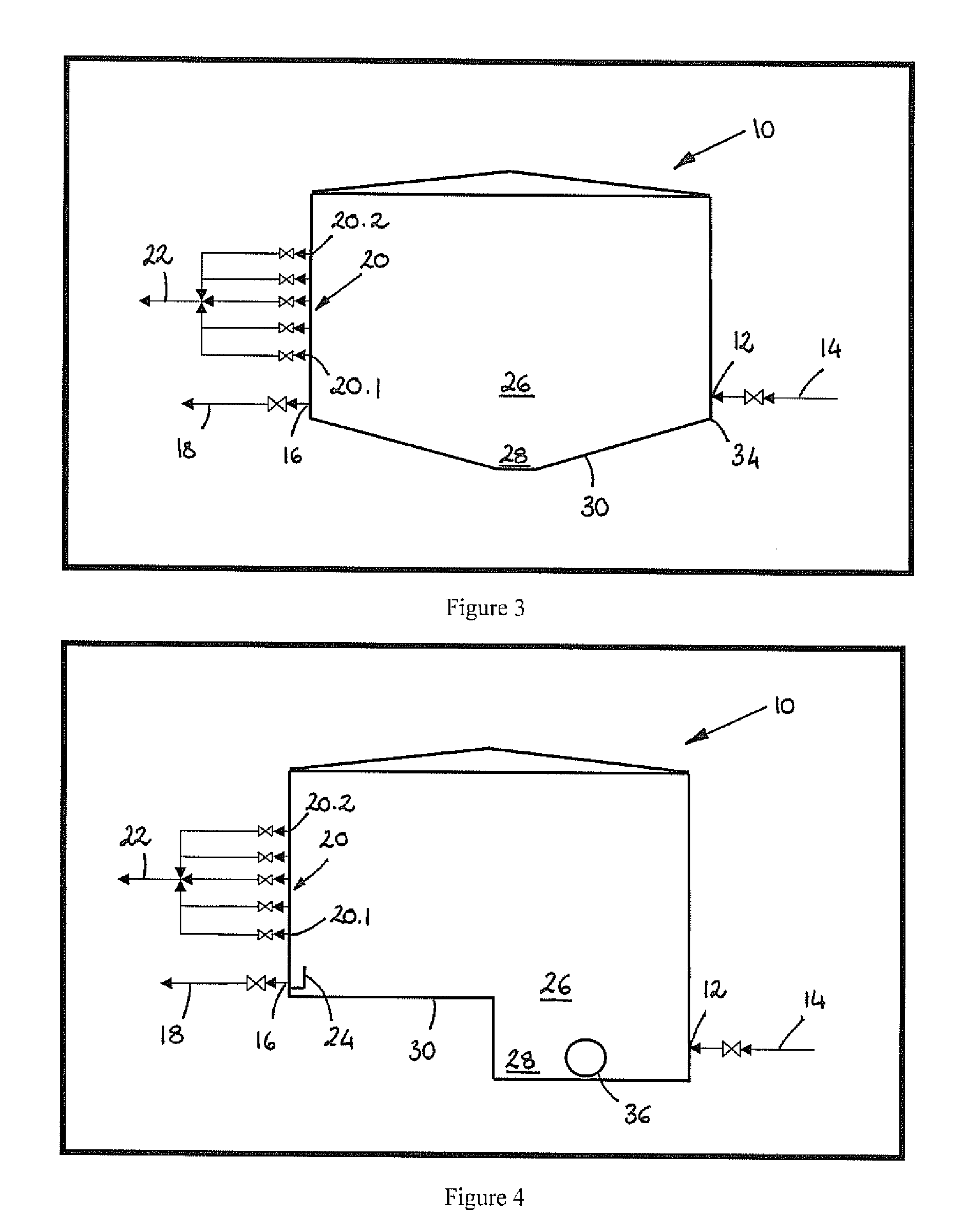Method and apparatus for separating a multi-component stream
- Summary
- Abstract
- Description
- Claims
- Application Information
AI Technical Summary
Benefits of technology
Problems solved by technology
Method used
Image
Examples
Embodiment Construction
[0059]In the drawings, reference numeral 10 generally indicates an embodiment of a process vessel in accordance with the present invention.
[0060]The process vessel 10 for separating a multi-component stream includes an inlet 12 for permitting introduction of reaction water stream 14 into the vessel 10 and an outlet 16 for withdrawing a water-rich phase 18 from the vessel 10.
[0061]In the embodiments shown, the working volume of the vessel is 11000 m3 and the typically feed rate of reaction water 14 is 840 m3 / h. In this case, the residence time is 13.1 hours. The reaction water stream 14 typically includes 4.8 mass % of non-acid chemicals and 1.1 mass % acids, with the remainder being water.
[0062]The vessel 10 further includes a plurality of draw-off points 20 for drawing off a phase 22 rich in suspended hydrocarbons from the vessel, the draw-off point(s) being located above the outlet 16.
[0063]A dividing means in the form of a baffle 24 (see FIGS. 1, 2 and 4) is located between the i...
PUM
| Property | Measurement | Unit |
|---|---|---|
| Fraction | aaaaa | aaaaa |
| Fraction | aaaaa | aaaaa |
| Time | aaaaa | aaaaa |
Abstract
Description
Claims
Application Information
 Login to View More
Login to View More - R&D
- Intellectual Property
- Life Sciences
- Materials
- Tech Scout
- Unparalleled Data Quality
- Higher Quality Content
- 60% Fewer Hallucinations
Browse by: Latest US Patents, China's latest patents, Technical Efficacy Thesaurus, Application Domain, Technology Topic, Popular Technical Reports.
© 2025 PatSnap. All rights reserved.Legal|Privacy policy|Modern Slavery Act Transparency Statement|Sitemap|About US| Contact US: help@patsnap.com



